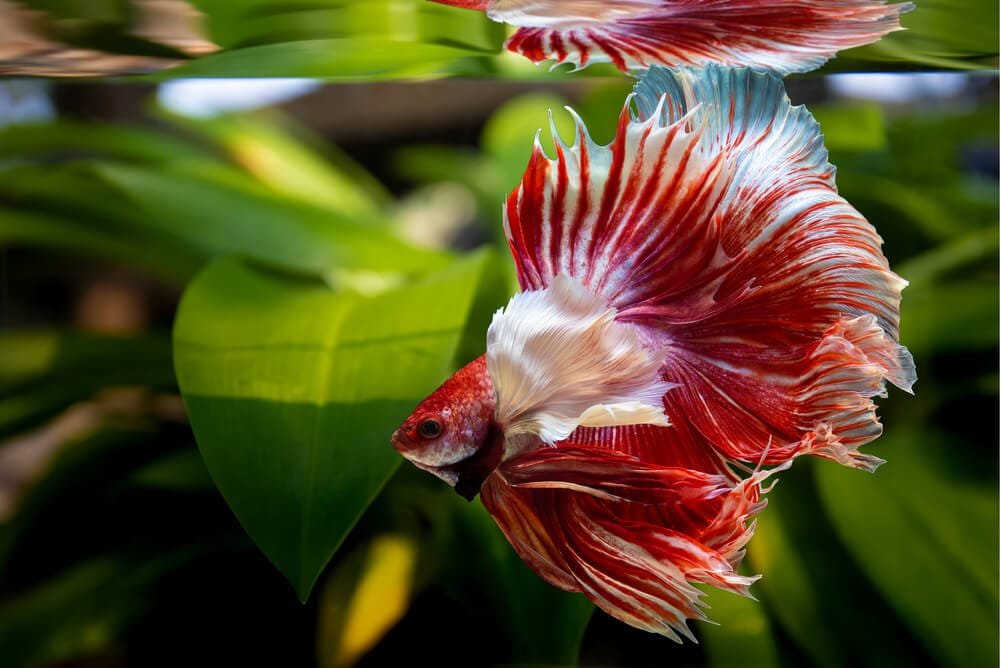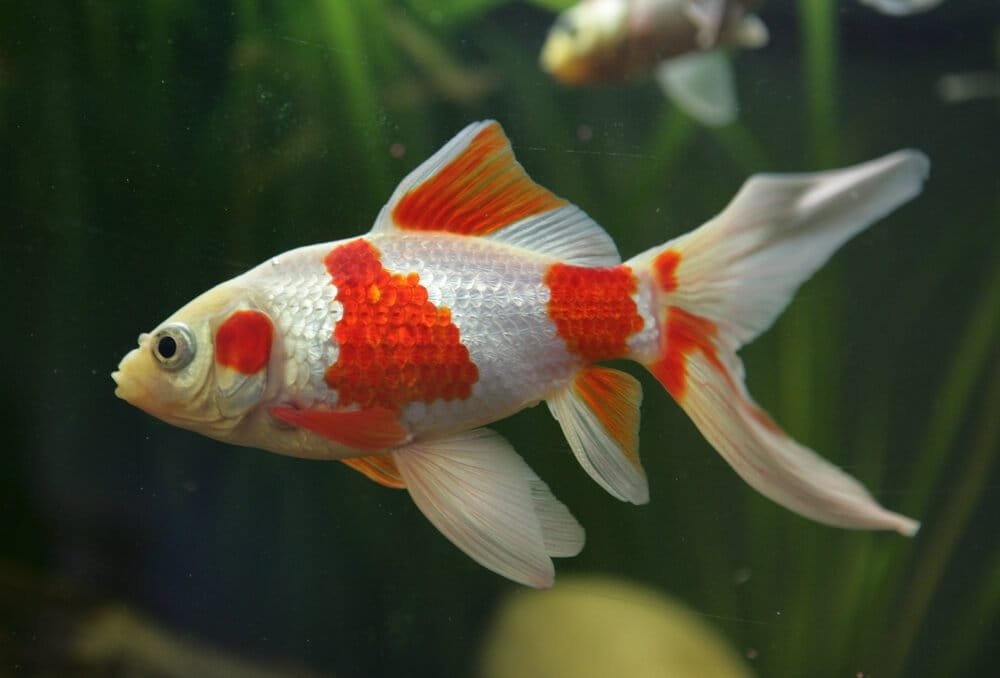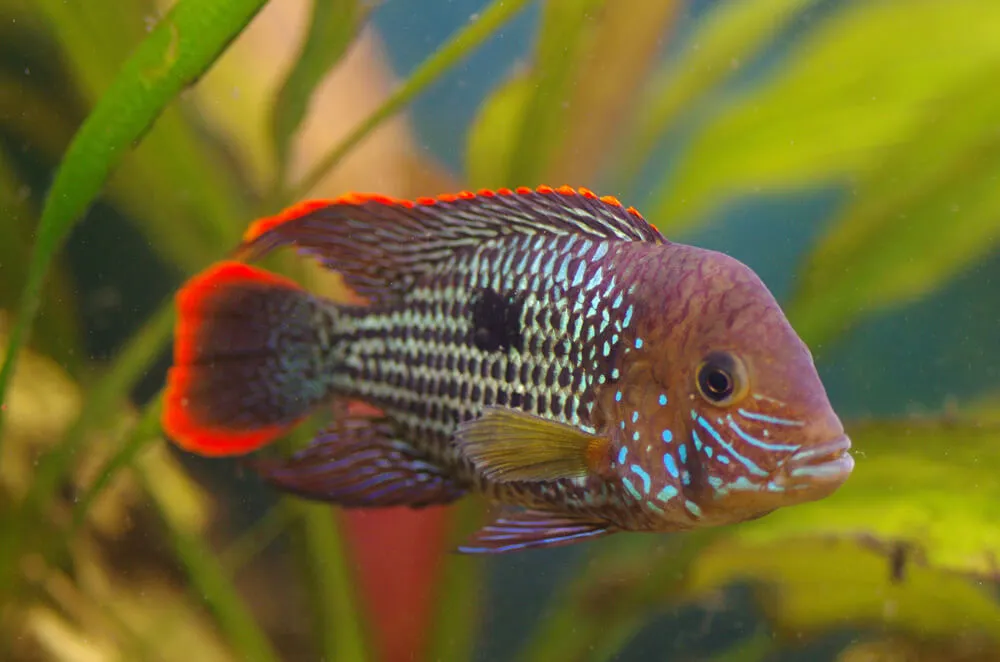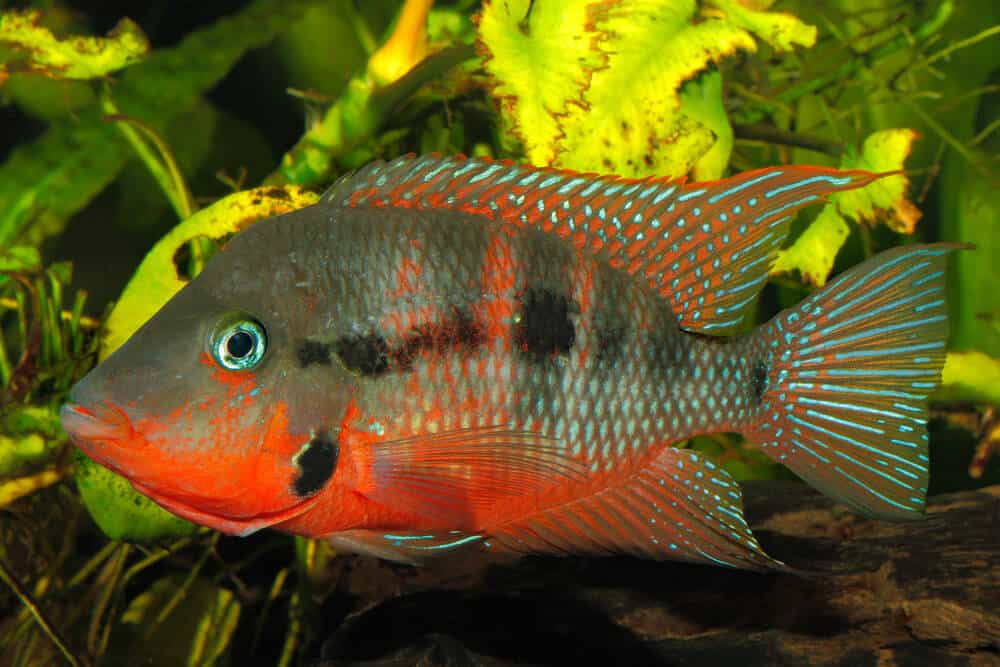Ever wondered why your betta fish looks stressed or lacks its vibrant colors? Mastering betta fish care is more than just a tank and occasional feeding.
Betta fish are stunning tropical pets that need special care. They thrive in precise environmental conditions. Professional fish care experts recommend creating a habitat like their natural shallow water ecosystem.
Many pet owners don’t realize how complex betta fish care is. These elegant swimmers need specific water temperatures, a 5-gallon tank, and managed nutrition. With the right care, your betta can become a vibrant, interactive companion.
Understanding their unique needs is key. From water chemistry to feeding schedules, every detail is important. This guide will help you keep your betta fish happy and stress-free.
Understanding Betta Fish Species and Characteristics
Betta fish are fascinating creatures with unique traits and behaviors. They come from the lush rice paddies of Southeast Asia. Aquarium lovers around the world adore them.
Natural Habitat and Origins
Betta fish are from the warm waters of Thailand, Vietnam, and nearby areas. Their home is shallow, warm waters with lots of plants. This environment helped shape their special ways of surviving and acting.

Physical Characteristics and Lifespan
Betta fish grow up to 2.5 inches long, with a beautiful flowing tail. They can live 3-5 years with good care. Some betta fish can even live up to 10 years in the best conditions.
| Characteristic | Details |
|---|---|
| Average Length | 2.5 inches |
| Average Lifespan | 3-5 years |
| Native Region | Southeast Asia |
Temperament and Behavior
Betta fish are very territorial. Male betta fish are known for their aggression, earning them the name “Siamese fighting fish”. They show the most aggression when they meet other males.
- Males are highly territorial
- Should be housed separately
- Females can be kept in small groups
“Understanding their natural instincts is key to providing a harmonious aquarium environment for these magnificent creatures.” – Aquarium Experts
These amazing fish need special care to do well in home aquariums.
Essential Tank Setup Requirements
Setting up the perfect betta fish tank is key for your fish’s health and happiness. It’s not just about adding water and a fish. A good tank setup needs careful planning and attention to detail.
Experts say a 5-gallon tank is the minimum for one betta. Smaller tanks can be hard to keep up and stress your fish. Here are the main things for a great tank for beginners:
- Tank Size: Minimum 5 gallons, preferably larger
- Heater: Keep water temperature between 78-82°F
- Filter: Gentle flow to prevent stressing the betta
- Substrate: Smooth gravel or sand
- Decorations: Soft plants and hiding spots
“A well-designed tank is like a five-star hotel for your betta fish” – Aquarium Experts
When setting up your tank, think about your betta’s comfort. Stay away from sharp decorations that can hurt their fins. Live or silk plants are great for enrichment and look like their natural home. Remember, betta fish need a warm, stable environment.
| Tank Requirement | Recommended Specification |
|---|---|
| Minimum Tank Size | 5 gallons |
| Water Temperature | 78-82°F |
| Filter Flow Rate | 3-5 times tank volume per hour |
Spending time on a thoughtful betta fish tank setup is worth it. It creates a healthy, engaging space for your fish. This lets their vibrant personality shine.
Creating the Perfect Water Environment
To make a great home for betta fish, you need to focus on the water. The right water conditions are key for their health and happiness. Let’s explore how to make a perfect aquatic space for them.
Water Temperature Control
The water temperature is very important for betta fish. They do best in temperatures between 76-82°F (24-28°C). A reliable heater is needed to keep the water at a steady warm temperature. Experts say using a good aquarium helps avoid temperature changes that can stress them out.

pH Levels and Water Chemistry
Knowing about water chemistry is important for betta fish health. The best pH for them is between 6.5-7.5, which is similar to their natural home. The water hardness also matters, with soft to medium being best.
- Recommended pH range: 6.5-7.5
- Preferred water hardness: Soft to medium
- Regular water testing is key
Filtration Systems
Filtration is critical for keeping the water clean. A gentle filter that changes the tank water at least five times an hour is best. It removes harmful toxins and keeps the water clean.
| Water Parameter | Ideal Range |
|---|---|
| Ammonia | 0.0 PPM |
| Nitrite | 0.0 PPM |
| Nitrate | <20 PPM |
“Clean water is the foundation of a healthy betta fish ecosystem.”
By managing these water parameters well, you’ll make a safe and happy home for your betta fish.
How to Keep Betta Fish Healthy Through Proper Nutrition
Betta fish are unique carnivorous creatures with specific fish food requirements. Understanding their dietary needs is key to keeping them healthy and vibrant.
Feeding betta fish the right amount is important for their health. These fish have small stomachs, about the size of their eyes. So, it’s important to feed them just the right amount. Experts say to feed betta fish 1-2 times a day, making sure not to overfeed.
- Recommended daily intake: 3-4 pellets per feeding
- Total daily food: 6-8 pellets
- Weekly feeding schedule: 5-6 feeding days with one fasting day
For betta fish, a varied diet is best. Nutrition diversity is key to maintaining a strong immune system. It’s good to mix up their food:
| Food Type | Nutritional Value | Feeding Frequency |
|---|---|---|
| Betta Pellets | High Protein | Daily Staple |
| Frozen Bloodworms | Protein-Rich Treat | 2-3 times per week |
| Freeze-Dried Daphnia | Digestive Health | Occasional Supplement |
“A varied diet is the secret to a healthy and thriving betta fish.” – Aquarium Nutrition Experts
Don’t overfeed betta fish, as it can harm their health. Look out for signs of digestive stress. Stick to a regular feeding schedule. Soaking dried foods before feeding can help prevent digestive problems and ensure they get the nutrients they need.
Tank Maintenance and Cleaning Schedule
Keeping your betta fish’s home clean is key to their happiness. A regular cleaning routine helps them stay healthy and thrive.
Weekly Water Changes
Water changes are vital for your tank’s health. Experts say to change 10-25% of the water every 1-2 weeks. This removes waste and adds nutrients.
- Use a gravel vacuum to remove debris
- Prepare fresh, dechlorinated water at the same temperature
- Avoid disturbing the beneficial bacterial ecosystem
Filter Maintenance
Your tank’s filter is essential for keeping it clean. Regular cleaning stops bad bacteria and keeps good ones.
- Rinse filter media in tank water (not tap water)
- Replace filter cartridges monthly
- Ensure consistent water flow
Water Quality Testing
Testing your water regularly is part of a good cleaning schedule. It helps keep your betta’s home stable and healthy.
| Parameter | Ideal Range | Frequency |
|---|---|---|
| pH Level | 6.5-7.5 | Weekly |
| Ammonia | 0 ppm | Weekly |
| Nitrites | 0 ppm | Weekly |
By sticking to these maintenance tips, you’ll make a great home for your betta. This will help them stay healthy and live a long life.
Enrichment and Entertainment Options
Keeping betta fish happy and active is key for their well-being. These smart fish need more than just a tank. Adding creative decorations and interactive toys turns their home into an underwater fun zone.
Here are some fun ways to keep your fish moving and thinking:
- Create multiple fish hiding spots using Anubias and Java fern plants
- Install floating mirrors for brief interactive sessions
- Use ping-pong balls for gentle play
- Introduce betta hammocks for resting
Live betta fish plants do more than just look good. They:
- Produce oxygen quickly
- Reduce harmful tank toxins by up to 25%
- Provide natural hiding spaces
- Enhance water quality
“A stimulated betta is a happy betta!” – Aquarium Experts
When picking tank decorations, remember betta fish are territorial. The right decorations can help manage their space and reduce stress. Toys like exercise mirrors can increase their activity by up to 30%, mimicking their natural hunting.
By spending time on a rich, dynamic environment, your betta fish will thrive. They’ll show off their brightest colors and personalities.
Common Health Issues and Prevention
Keeping your betta fish healthy is very important. Knowing about betta fish diseases and their signs helps prevent big problems. This way, your fish can stay lively and active.
Betta fish face many health issues that can get worse fast if not treated quickly. Spotting early signs is essential for treating and preventing diseases.
Signs of Illness to Watch For
Watching your betta’s behavior is key to catching diseases early. Look for these signs:
- Unusual swimming patterns
- Changes in color or appearance
- Reduced appetite
- Lethargy or hiding
- Visible physical abnormalities
Treatment Options for Common Conditions
Each betta fish disease needs its own treatment. Talking to experts can guide you to the best treatments.
Preventative Care Measures
Strong fish quarantine steps can lower disease risks:
- Maintain consistent water quality
- Perform regular tank maintenance
- Quarantine new fish before introducing them
- Monitor water parameters
- Provide a balanced diet
“Prevention is always better than cure when it comes to fish health.”
Being careful and proactive helps your betta fish stay healthy. This way, you can avoid serious health problems.
Common Varieties
Veil Tail
The veil tail is one of the most common and recognizable betta fish varieties. It has long, flowing fins that arch gracefully, resembling a veil. The veil tail betta comes in various colors and patterns, making it a popular choice among betta enthusiasts.
Crown Tail
The crown tail betta is characterized by its unique and stunning finnage. The fins of the crown tail betta are long and spiky, resembling a crown. This variety often displays vibrant colors and intricate fin patterns, which further enhance its regal appearance.
Halfmoon
The halfmoon betta is named after the shape of its tail, which forms a perfect half-circle when fully extended. These bettas have large, showy fins that fan out, creating a spectacular display. Halfmoon bettas are highly sought after for their stunning tail shape and coloration.
Plakat
The plakat betta is known for its short, rounded fins. Unlike other betta varieties, the plakat has a more streamlined body and is closer in appearance to wild bettas. These bettas are known for their vibrant colors and intense personalities.
Double Tail
The double tail betta is distinctive due to its split caudal fin, giving it a unique and eye-catching appearance. The two lobes of the tail usually fan out, creating a stunning display. This variety is highly prized and sought after.
Delta
The delta betta refers to a betta with a triangular-shaped tail. The fins of the delta betta fan out, resembling a triangle when fully extended. They come in various colors and patterns, making them a popular choice among betta enthusiasts.
Super Delta
The super delta betta is similar to the delta betta in terms of tail shape, but the fins extend more than 50 degrees from the body when fully flared. This variety showcases vibrant colors and intricate patterns, making it a visually striking choice for betta enthusiasts.
Rosetail
The rosetail betta is known for its ethereal and elaborate finnage. The caudal, dorsal, and anal fins of the rosetail betta are excessively branched and have a ruffled appearance, resembling a rose in bloom. This magnificent variety is highly desired for its intricate fin structure.
Dumbo
The dumbo betta, also known as the elephant ear betta, is distinguished by its large pectoral fins that resemble the ears of an elephant. This variety has a unique and endearing appearance, making it a favorite among betta enthusiasts.
Compatible Tank Mates and Social Behavior
Betta fish often live alone, making it hard to find tank mates. Male bettas can be very territorial. But, with the right planning, you can create a peaceful aquarium.
It’s important to know about betta fish aggression when picking tank mates. Not all fish can live with bettas. So, you need to choose carefully.
Recommended Tank Mates
- Corydoras Catfish: Peaceful bottom dwellers
- Snails: Nerite and Enigma Snails
- Shrimp: Ghost and Cherry Shrimp
- Tetras: Neon and Harlequin Rasboras
- Otocinclus Catfish: Small algae eaters
Key Considerations for Betta Tank Mates
| Species | Compatibility Rating | Tank Size Recommendation |
|---|---|---|
| Neon Tetras | High | 10+ gallons |
| Corydoras | High | 10+ gallons |
| Snails | Very High | 5+ gallons |
“The key to successful betta fish tank mates is understanding individual temperament and providing adequate space.”
Female bettas are less aggressive, so you can have more tank mates. A big tank (30+ gallons) helps them live together peacefully.
Critical Recommendations
- Quarantine new fish before introduction
- Avoid fin-nipping species
- Monitor fish interactions closely
- Maintain stable water parameters
Finding the right tank mates for betta fish takes patience and knowledge. You need to understand each fish’s special traits.
Conclusion
Understanding betta fish care is key to their happiness. These beautiful fish need a special home to thrive. By following the tips in this article, you can make sure your betta fish is healthy and happy.
Looking after your betta fish is more than just cleaning their tank. It’s important to watch for changes in their behavior. Keeping their tank right means keeping the water just right and feeding them well.
Being a betta fish owner can be very rewarding. It’s all about watching them closely and caring for them well. With the right care, your betta fish can be a joy to watch.
Every betta fish is different, so you need to learn about them. Being a good owner means always learning and loving your betta fish. This guide will help you create a great home for your betta fish.
FAQ
How big of a tank do betta fish need?
Betta fish need at least 5 gallons to thrive. Larger tanks offer better water stability and swimming space. This is key for their health and happiness. Small tanks can quickly become toxic and stressful for betta fish.
What temperature should a betta fish tank be?
Betta fish like warm water, between 76-82°F (24-28°C). Keeping the temperature steady is vital for their health. A reliable heater is a must. Sudden changes in temperature can stress them out and weaken their immune system.
Can I keep multiple betta fish in the same tank?
No, male betta fish are very territorial and will fight if kept together. Female betta fish can sometimes live in groups in large tanks. But, this needs a lot of experience and should only be done by experts.
How often should I feed my betta fish?
Adult betta fish should eat 2-3 small meals a day. Give them only what they can eat in 2 minutes. This usually means 2-3 pellets per meal. Overfeeding can make them obese and harm the water quality.
Do betta fish need a filter?
Yes, betta fish need a filter to keep the water clean. Choose a gentle, low-flow filter. It helps remove waste, supports beneficial bacteria, and keeps the water oxygenated.
How often should I change the water in my betta tank?
Change 25-30% of the water weekly in tanks under 10 gallons. For bigger tanks, do 20% water changes every two weeks. Always use a water conditioner to remove harmful substances and match the tank’s temperature.
What are signs my betta fish is sick?
Look for signs like loss of color, lethargy, and lack of appetite. Also, watch for unusual swimming, fin rot, white spots, or bloating. Any changes in behavior or appearance mean they might be sick and need help right away.
What do betta fish like in their tank?
Bettas like tanks with live or silk plants and smooth decorations. They enjoy hiding spots and areas with calm water. Avoid decorations that could hurt their fins.
Can betta fish live with other fish?
Some calm, non-flashy fish can live with bettas in big tanks. Good tank mates include snails, shrimp, and calm bottom-dwellers like Corydoras. Always check if the fish get along and provide enough space.
How long do betta fish typically live?
With good care, betta fish can live 3-5 years. Their lifespan depends on water quality, diet, genetics, and stress levels. Proper care can help your betta fish live a long, healthy life.







